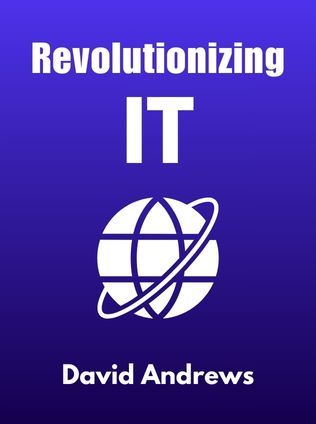
Revolutionizing IT
The Art of Using Information Technology Effectively
By David Andrews,
Published 10/2002
Revolutionizing IT: The Art of Using Information Technology Effectively
About the Authors
David H. Andrews and Kenneth R. Johnson are prominent figures in the field of information technology management. Andrews has led significant IT projects at major corporations such as SmithKline and Citibank, bringing a wealth of practical experience and strategic insight to his work. His career has been marked by a focus on aligning IT initiatives with business goals, ensuring that technology investments deliver real value. Johnson, with over 30 years in software development, has overseen the creation of advanced systems in various sectors. His deep technical expertise and understanding of the software development lifecycle provide a solid foundation for the strategies outlined in this book. Together, they offer a unique blend of management and technical perspectives, making "Revolutionizing IT" a comprehensive guide for navigating the complexities of IT project management.
Main Idea
"Revolutionizing IT" addresses a critical issue faced by many organizations: the difficulty of realizing concrete business benefits from IT projects. Despite significant investments, many IT initiatives fail to meet expectations, often running over budget and behind schedule. Andrews and Johnson propose a new approach, the RITE (Revolutionizing IT Effectively) Approach, which offers a set of guiding principles designed to streamline IT project management. The core ideas include setting clear time limits, focusing on incremental improvements, leveraging existing solutions, prioritizing progress over perfection, and making end users accountable for project outcomes. These principles aim to transform the way organizations think about and manage IT projects, ensuring that technology investments lead to tangible business improvements.
Table of Contents
- The Nature of Projects
- The Classic View of Project Management Theory
- Elements of Successful Projects
- Control Project Scope and Establish Accountability
- The Project Balancing Act
- Project Management
The Nature of Projects
In an era characterized by rapid technological advancements, the ability to effectively manage IT projects has become increasingly critical. As new technologies emerge, they create opportunities for businesses to improve existing processes or introduce new services. However, the pace at which these opportunities arise often outstrips the ability of organizations to exploit them. This is where the RITE Approach comes into play.
According to Andrews and Johnson,
"Letting time determine the scope of your project will save it from becoming bloated and irrelevant."This principle is foundational to the RITE Approach, emphasizing the importance of setting clear time boundaries for projects. By doing so, organizations can avoid the common pitfall of scope creep, where projects expand beyond their original objectives, leading to delays and increased costs. The authors argue that projects should mimic the evolutionary process found in nature, where change occurs gradually through small, incremental improvements rather than large, disruptive leaps. This approach not only mitigates risks but also allows organizations to adapt more flexibly to changing circumstances.
The RITE Approach also advocates for recycling proven concepts instead of reinventing the wheel. In the world of IT, many challenges have already been addressed by others, and there is significant value in leveraging existing solutions. This strategy not only saves time and resources but also capitalizes on the collective knowledge and experience of others. As the authors note,
"Borrowing from others who have successfully solved a problem is often better than developing the same or another solution yourself."This principle encourages a pragmatic approach to problem-solving, where the focus is on delivering value rather than pursuing originality for its own sake.
Sign up for FREE and get access to 1,400+ books summaries.
You May Also Like
The Lean Startup
How Today's Entrepreneurs Use Continuous Innovation to Create Radically Successful Businesses
By Eric RiesWho Moved My Cheese?
An Amazing Way to Deal with Change in Your Work and in Your Life
By Spencer Johnson, M.D.Make Your Bed
Little Things That Can Change Your Life...And Maybe the World
By William H. McRavenThe Ride of a Lifetime
Lessons Learned from 15 Years as CEO of the Walt Disney Company
By Robert Iger



















